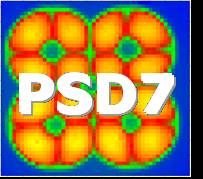Speaker
Dr
Erik Heijne
(CERN-PH)
Description
A long succession of inventions of particle detectors has given life to
generations of scientists and has enabled step by step the understanding of
chemistry, the physics of light, matter and cosmos. Over the last hundred years the
imaging of the interactions of ionizing particles has allowed to penetrate
mysteries of elementary objects and forces, far beyond what we can see and feel
with our senses. The detectors often provide the confirmation of a postulated
phenomenon, such as the positron, but they may also unveil unexpected surprises
such as the X-rays. Once something is well understood, however, it needs not be a
prime object of study anymore, and more specific and selective techniques are
required to reach a deeper level of observation. This may be achieved by evolution,
perfectioning existing methods. Fundamentally innovative approaches in
instrumentation that tackle the objectives in a different way often achieve a
breakthrough in the physics understanding. In particle physics both the
accelerators as the probe and the detectors as the analyzer need a continuous
process of upgrading. New detection schemes have been based on brilliant but
random ideas, such as the Wilson Cloud chamber, or on systematic evaluation of
available alternatives. In recent years it has become obvious that the use of the
silicon chip technology allows quite innovative and powerful detector designs. It
is now possible to envisage unprecedented rates of interactions, nearly a thousand
million per second, while keeping the possibility to retrieve all detailed
information concerning a few hundred selected interactions only. Some trends in
processing and packaging technology may eventually lead to even more advanced
detectors. Extrapolating the historical experience one may assume this to be a
basis for new observations and new theories, because it seems likely that realms of
space structures, forces and quantum phenomena remain undiscovered. Life in
science in general, and physics in particular will remain worthwile and full of
purpose. The side-effect that new detectors also lead to new industrial potential
is not a usual concern for the scientists at the forefront. However, this must be
stressed with more emphasis in order to ensure the continuation of support for
scientific activity. In hospitals, new detectors can literally give life to sick
people, and in the short term that weighs more than the identification of a new
meson.
Primary author
Dr
Erik Heijne
(CERN-PH)




